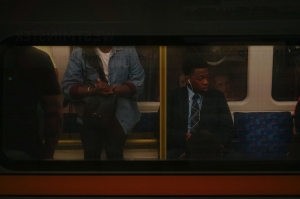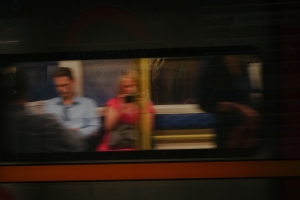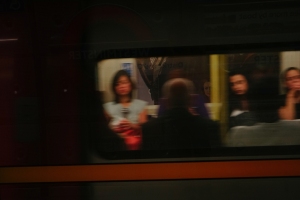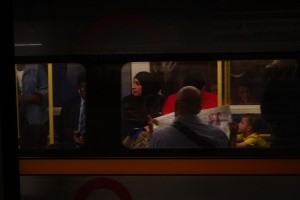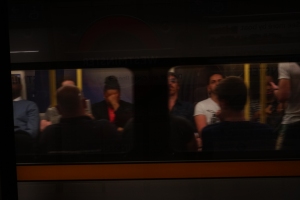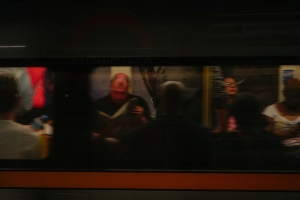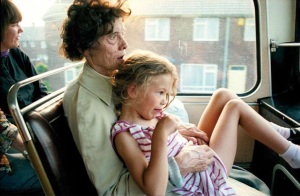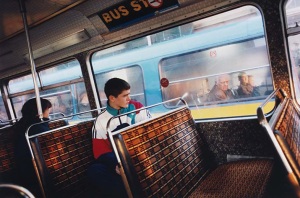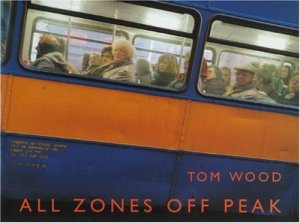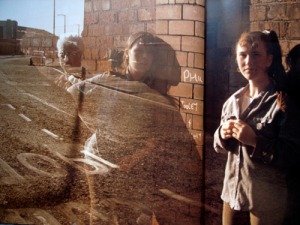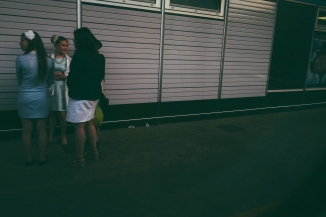
For this exercise I selected two closely related locations but with different functions. As I worked on this exercise I made the conscious decision to split the exercise into two separate posts. This first part is from the point of view of a commuter on a train leaving central London. I attempted to capture the user’s view as much as possible and from a few different angles to demonstrate the function of the space. I was inspired by Tom Wood’s 20 year series on bus commuters during the 1980s and 1990s (see my last blog post), and I attempted to employ some of his creative approaches towards composition and choice of subject. I was also aware that I was not going to be able to touch on the same social commentary as he did.
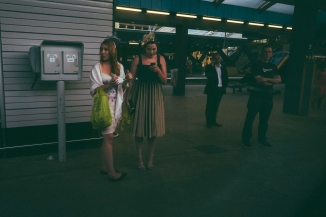
Of course we know that a commuter sat on a train is likely to be sat down and they are unlikely to be standing up much. When they are not sleeping or engaged in some over distraction they are going to be looking out the window. It is these views I was most concerned with when selecting my subjects.
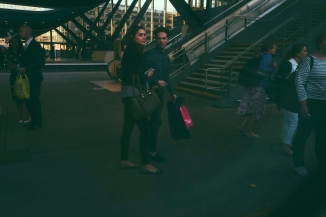
The first three images I chose to present are from the window of the moving carriage as it was approaching a station. I pre-selected the settings (a fast shutter speed, small aperture and high ISO to compensate) and allowed the autofocus to focus for me. Finding subjects was a lot to do with luck and waiting for the right moment, things you need to have when shooting on any street, but on a moving train the decision to shoot has to be made much faster. The results were somewhat inconsistent, but I felt I captured some interesting moments on the station platform. Some of my subjects were in clear anticipation of boarding the train while others were too deep in conversation to notice. Most importantly it is fairly apparent to the viewer that the images are shot through glass and possibly from a moving vehicle as the subjects are not sharp and appear to be moving. The location is clearly a station as well. These shots therefore hint at the function of the space the user is sitting in, and how they passively interact with the space around them.
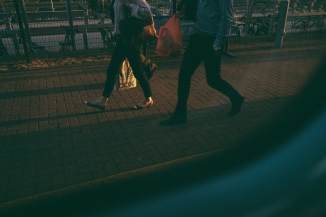
For the next two images I opted for a slightly different composition. This time the train had stopped and passengers had alighted. This is apparent from the fact that they appear to be walking away from the train and are carrying bags, suggesting they have finished using the space. From these shots the viewer could assume the space is some kind of public transport (due to the suitcases and bags). In terms of framing, I chose to focus on the subjects’ limbs and bags to help better convey the functionality of the space and I left in some of the window frame to help the viewer.
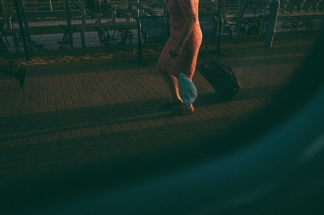
The image below was also chosen to better convey the space. The viewer can see upright seats and a man leaning forward in the row in front of the user. From this it could also be deduced as the type of space you would find on public transport, hinted at from the design of the seats and close proximity of the layout.
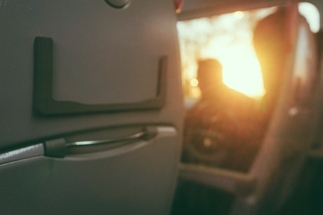
The final three images in the set focus back on the exterior landscape. I noticed in Tom Wood’s “Bus Odyssey” series that he not only focused on the interior of the space but also the exterior landscape. In the first few images I had focused on the exterior, but for the final three images I chose to focus on non-human elements. We can see (in order) a lamp post with a sign on, telephone wires and a pylon. Each of the elements is vignetted – I created this effect by using the seat in front and the window frame. I felt this is a view typical to someone travelling in a moving vehicle, particularly on a train or bus. The elements also appear slightly blurred and are also things you would often see whilst travelling in the countryside.
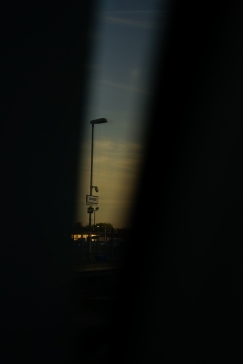
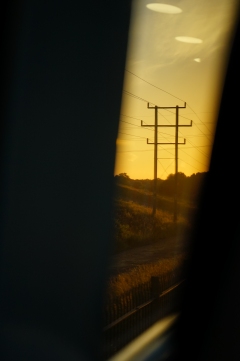
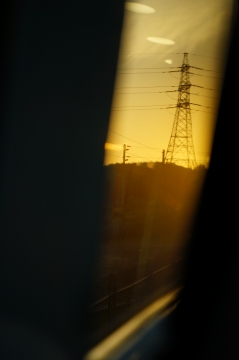
This set of images was an attempt to practice a variety of approaches that I had decided upon in my research prior to the exercise. Rather than attempting to present a linear narrative they are ordered in such a way to show my different approaches in fulfilment of the brief. I enjoyed researching and shooting for the exercise, and I was pleased with the creativity evident in the results.
